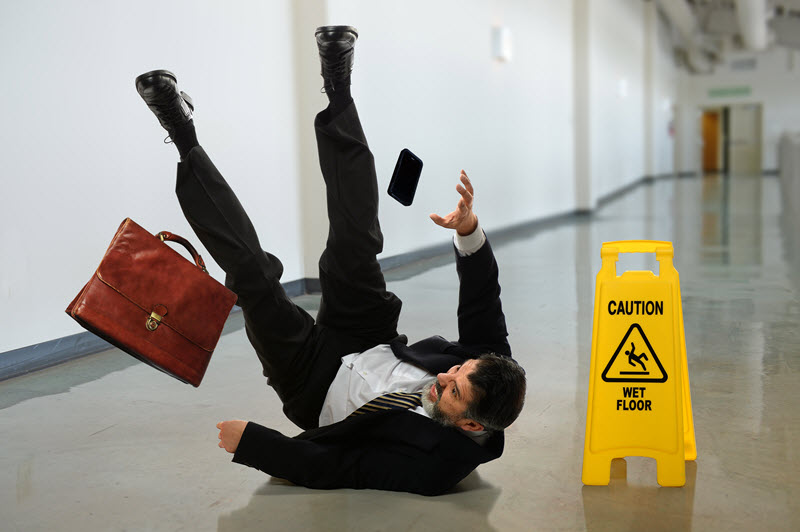
Seventy billion dollars is the average amount paid out in compensation and medical costs as a result of slip and fall accidents within the U.S.; and 55 percent of all of these accidents are caused by unsafe or unclean floors. Measuring the coefficient of friction on your hard surface floors is a step you can take to monitor slip resistance. With this information, you can work with your floor maintenance contractor to ensure a safe floor surface for customers and employees.
Building owners and managers know the importance of safety in their buildings and the cost implications of getting it wrong. Most implement programs that address safety issues immediately, i.e. clearing up spills and removing potential hazards.
Although necessary, these measures aren’t enough to prevent all incidents, nor are they adequate to meet regulation from the American National Standards Institute (ANSI) and the National Floor Safety Institute (NFSI). These two institutes have developed a standard measurement for a slip and fall risk. Rigorous standards have also been initiated by OSHA, which calls on all businesses to monitor and maintain the floors in their buildings by keeping them obstruction-free, clean and dry at all times.
Slips and falls can occur anywhere in your facility, from public areas to employee-only areas. They can involve all of those who use the building, including your janitorial contractor’s employees. Therefore, a safe floor program is crucial and will involve both your commercial cleaning company and your own staff.
Here are some basic slip/fall prevention tips:
The measurement of coefficient of friction (COF) is the most common method employed by regulatory agencies when looking at slip resistance. This is the ratio of a force that is causing something to slide along a surface to the load that is pushing these two surfaces together.
When it comes to flooring, measuring the coefficient of friction helps to establish how safe a surface is.
A common method to measure the coefficient of friction on a floor involves a leather shoe heel, which has a 50lb weight placed on it before being put flat onto the floor it is being tested on. It is then pulled across the surface with an electronic scale or spring and the amount of force required (this measurement is in pounds) will be noted. This total is then divided by the weight (50lbs) to provide the value of the coefficient of friction. The OSHA recommends a 0.5 COF and both the ANSI and NFSI indicate that a high-traction surface would be one that is classed at a wet 0.6 COF or above.
“Pull meters” and portable test meters are available to test these measurements and many cleaning contractors will perform tests on your floors.
Integrating an effective floor safety program into your facility is essential and is something that your janitorial service provider should do as part of their floor care program. Our team at the Cleaning Services Group Inc. would welcome the opportunity to discuss how to keep your floors safe, your records current, your facility up to the standards, and, of course your entire building clean.









